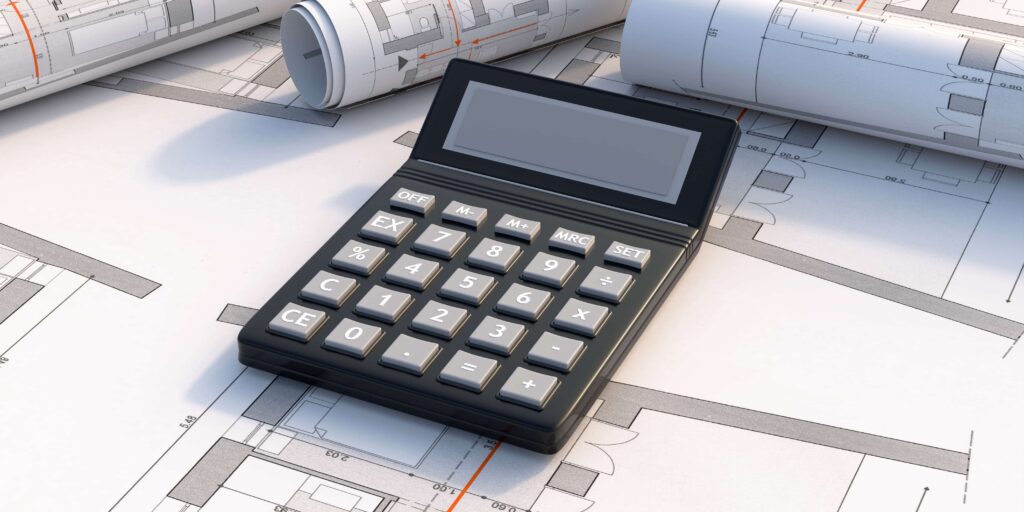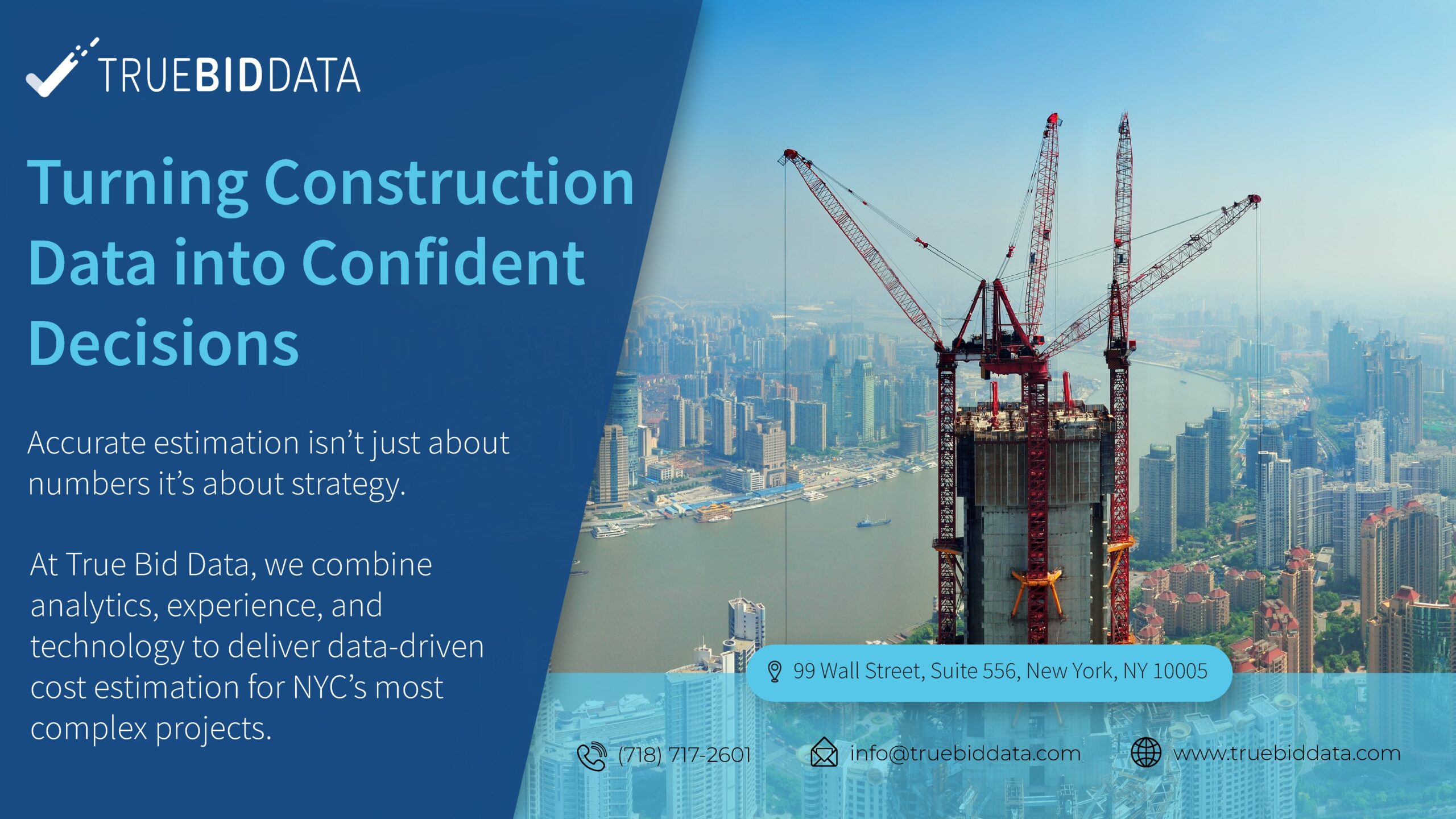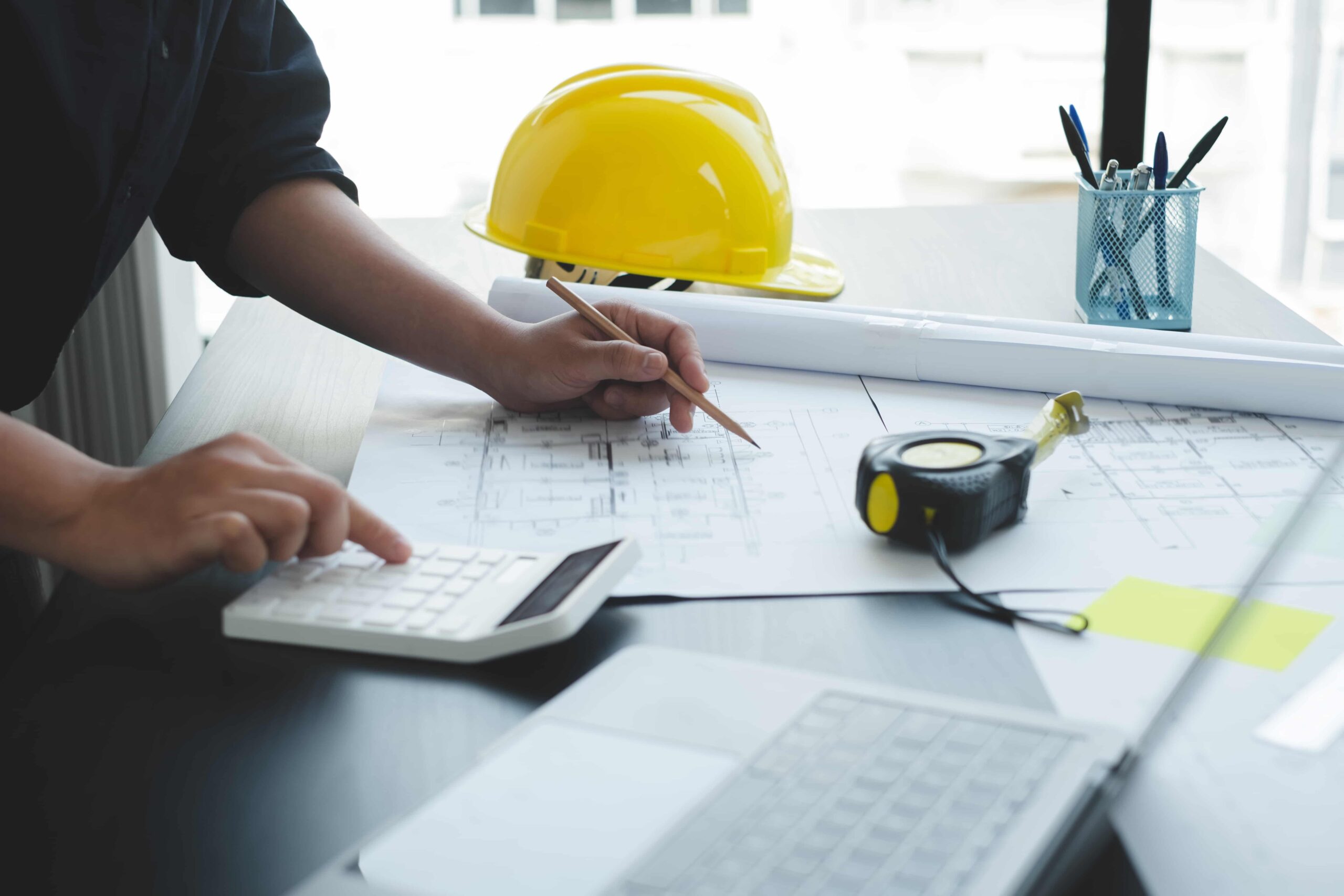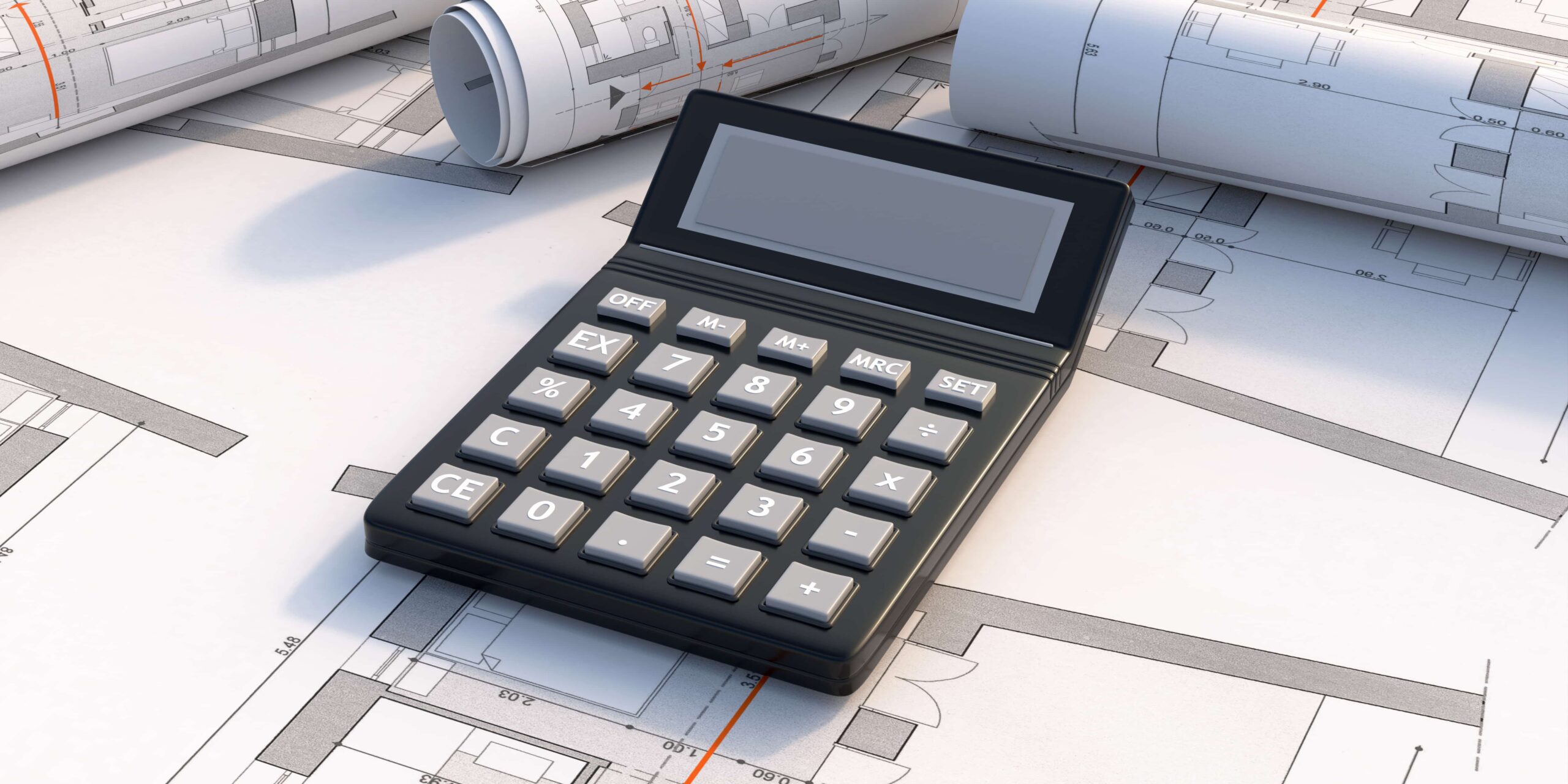
In the fast-evolving New York City construction industry, cost estimation in construction has become one of the most decisive factors determining a project’s success. Whether it’s a public infrastructure project in Manhattan, a school renovation in Queens, or a mixed-use building in Brooklyn, accurate cost forecasting defines the efficiency, profitability, and credibility of every contractor and developer involved.
At True Bid Data, we believe that cost estimation in construction is not just about calculating numbers it’s about transforming data into actionable intelligence that drives smarter decisions and more predictable outcomes.
The Role of Cost Estimation in Construction
At its core, cost estimation in construction involves forecasting all expenses related to labour, materials, equipment, and overheads required to complete a project. However, in a market as complex as New York City, this process extends far beyond simple arithmetic.
Accurate cost estimation builds the financial framework upon which every stage of construction rests from initial design to procurement and execution. When handled properly, it allows teams to control budgets, avoid disputes, and make transparent, data-backed decisions throughout the project lifecycle.
Challenges of Cost Estimation in NYC
Estimating costs in New York City presents unique challenges due to local market dynamics:
- Labour Costs – Prevailing wage laws, union regulations, and labour availability can drastically influence pricing.
- Material Volatility – Frequent changes in material costs due to import dependencies or regional demand.
- Permitting and Compliance – Regulatory complexities and inspection requirements often introduce unexpected expenses.
- Site Access and Logistics – Limited space, traffic restrictions, and delivery constraints increase logistical costs.
- Seasonal Factors – Weather-related work adjustments or protection costs can alter total estimates.
Understanding these local variables is essential to producing accurate cost forecasts that reflect real-world project conditions.
Data-Driven Cost Estimation for Construction Projects
The traditional approach to estimation relied heavily on historical averages and manual spreadsheets. Today, data analytics and automation are redefining how cost estimation in construction is performed—especially in a market as dynamic as NYC.
At True Bid Data, we promote data-driven estimation strategies that integrate:
- Market Price Tracking – Monitoring material and equipment costs across multiple suppliers in real time.
- Labour Analytics – Comparing union, non-union, and prevailing wage rates to establish realistic baselines.
- Historical Benchmarks – Using data from completed New York City projects to refine assumptions.
- Predictive Forecasting – Accounting for inflation, supply shortages, and policy changes before they occur.
This approach ensures that estimators and project managers make decisions based on accurate, live data rather than outdated cost assumptions.
Components of Construction Cost Estimation
Every detailed estimate should include the following cost divisions:
- Direct Costs – Labour, materials, and equipment directly tied to the project scope.
- Indirect Costs – Site overheads, permits, insurance, and temporary utilities.
- Contingency Allowances – Buffers for unforeseen conditions or price fluctuations.
- Escalation and Inflation – Adjustments for long-duration projects impacted by market changes.
- Profit and Margin – Contractor’s return for risk and effort.
Breaking down estimates in this manner provides transparency and enables better cost control at each project phase.
The Role of Digital Tools in Cost Estimation
Digital transformation has revolutionized cost estimation in construction. Platforms like PlanSwift, Bluebeam, and RSMeans Online now integrate advanced capabilities that streamline data collection, automate takeoffs, and enhance collaboration.
For example:
- Automated Quantity Takeoffs – Extracting precise quantities from digital drawings to save time.
- Integrated Databases – Linking local labour and material rates directly into estimates.
- Scenario Modelling – Comparing multiple construction methods for cost efficiency.
- Cloud Collaboration – Allowing estimators, architects, and project managers to share real-time updates.
In a high-stakes environment like New York City, these digital workflows ensure greater accuracy, speed, and consistency in every cost estimate.
How Cost Estimation Shapes Strategic Decisions
Beyond budgeting, cost estimation in construction plays a vital strategic role. It supports:
- Feasibility Analysis – Determining whether a concept is financially viable before design approval.
- Value Engineering – Identifying cost-saving opportunities without compromising quality.
- Risk Mitigation – Anticipating potential overruns through scenario-based analysis.
- Bid Competitiveness – Helping contractors win projects with data-backed, credible pricing.
When estimation becomes part of strategic planning, it drives confidence among clients and investors, leading to smoother execution and stronger long-term relationships.
Estimation as a Tool for Risk Management
New York City’s construction sector is known for uncertainty weather delays, market inflation, and design revisions can all impact cost. A robust estimation process acts as a safeguard by embedding risk analysis directly into the budget.
Through analytics and predictive insights, True Bid Data helps identify potential cost risks early, allowing project teams to allocate contingencies wisely. This approach transforms estimation from a reactive process into a proactive financial control system.
The Future of Cost Estimation in Construction
As technology advances, the future of cost estimation in construction will be increasingly automated and data-driven. Artificial intelligence will allow estimators to pull real-time cost data, simulate complex project conditions, and generate highly accurate projections within minutes.
For NYC-based contractors, this evolution will lead to faster bidding, fewer errors, and greater competitiveness. True Bid Data continues to support this shift by empowering construction professionals with smart analytics and digital estimation tools tailored for modern demands.
Final Thoughts
In New York City, where every square foot counts and every deadline matters, cost estimation in construction is more than a technical skill—it’s a strategic advantage. With accurate, data-driven estimation, stakeholders can control costs, mitigate risks, and deliver projects on time and within budget.
True Bid Data remains committed to redefining the future of construction estimation through digital innovation, analytics, and transparency. By transforming data into insight, we help construction professionals build smarter, faster, and more efficiently across NYC.




